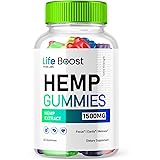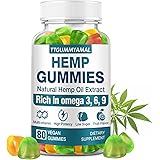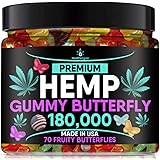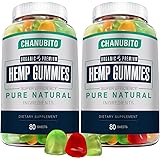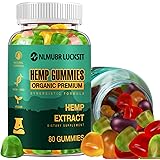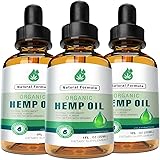The conversation around mental health has never been more critical, with anxiety standing out as a pervasive challenge in our modern world. As Demi from Endoca rightly points out in the video above, anxiety has reached epidemic proportions, impacting millions globally. To put it into perspective, a staggering 60 million individuals across Europe grapple with anxiety, while in the United States, it affects nearly 20% of the entire population. This widespread prevalence underscores the urgent need for effective, scientifically-backed approaches to manage its symptoms. In light of this, scientific interest has increasingly turned towards compounds like cannabidiol (CBD) and its potential role in mitigating the burden of anxiety.
The Pervasive Nature of Anxiety: A Global Health Concern
Anxiety disorders are not just a feeling of worry; they are a group of mental health conditions characterized by intense, excessive, and persistent worry and fear about everyday situations. These feelings can lead to recurring panic attacks, a sensation of impending doom, shortness of breath, and a host of other debilitating physical and psychological symptoms. Conditions such as Generalized Anxiety Disorder (GAD), Social Anxiety Disorder (SAD), Panic Disorder, and Specific Phobias significantly impact an individual’s quality of life, affecting their work, relationships, and overall well-being.
The sheer scale of those affected highlights why the search for effective interventions, whether pharmaceutical or complementary, is so vital. Many individuals seek alternatives or supplements to conventional treatments, often driven by a desire for natural solutions with fewer side effects. This context sets the stage for understanding the growing interest in **CBD for anxiety** and why research into its mechanisms is so compelling.
Scientific Scrutiny: Unpacking CBD’s Role in Human Anxiety Studies
One of the most encouraging aspects of the research into **CBD and anxiety** is the progression from preclinical animal studies to human trials. While much of cannabinoid research is still in its nascent stages, the field of **CBD for anxiety** has seen a notable advancement into human models. This is crucial because human physiology often responds differently than animal models, providing more direct insights into potential therapeutic applications.
Although many studies may not yet meet the stringent criteria of large-scale, double-blind, placebo-controlled trials – the gold standard for clinical research – a substantial body of evidence is accumulating. Researchers have particularly focused on the effects of **CBD on social anxiety**, a common and often debilitating form of anxiety where individuals experience intense fear of social situations, leading to avoidance and significant distress.
The Public Speaking Paradigm: A Glimpse into Real-World Efficacy
A frequently cited real-world example, highlighted in the video, involves a simulated public speaking test. This type of scenario is an excellent model for inducing situational anxiety and measuring physiological and psychological responses. In such studies, participants are divided into groups, with one group receiving CBD and another a placebo, before facing a public speaking assignment designed to provoke anxiety.
The findings from these types of studies have been consistently insightful. Participants who received **CBD oil for anxiety** consistently reported significantly reduced feelings of anxiety, alongside improvements in cognitive impairment (such as difficulty concentrating) and speech problems (like stuttering or blocking) that often accompany acute stress. In contrast, the placebo group typically exhibited higher levels of anxiety and performed demonstrably worse, validating the subjective experience with observable outcomes. This concrete example provides a compelling argument for the potential of **cannabidiol and anxiety** management in acute, anxiety-provoking situations.
Unpacking the Mechanisms: How CBD Interacts with Our Biology
Beyond anecdotal reports, understanding *how* **CBD for anxiety** works at a biological level is paramount. The science suggests that CBD influences several key neurobiological pathways involved in mood regulation and stress response. These interactions offer a sophisticated explanation for its anxiolytic properties.
1. Serotonin Receptors and Mood Regulation
One primary pathway involves CBD’s interaction with the brain’s serotonin receptors, specifically the 5-HT1A receptor. Serotonin is a crucial neurotransmitter often referred to as a ‘feel-good’ chemical, playing a significant role in mood, sleep, appetite, and fear responses. Many conventional anti-anxiety and antidepressant medications, such as SSRIs (Selective Serotonin Reuptake Inhibitors), work by modulating serotonin levels.
Unlike SSRIs, which block the reuptake of serotonin, CBD acts as an agonist at the 5-HT1A receptor. This means it directly stimulates the receptor, mimicking the effects of serotonin. By activating these receptors, CBD can help regulate mood and reduce the physiological symptoms associated with anxiety, such as heightened stress and nervousness. This direct interaction offers a distinct mechanism of action compared to many pharmaceutical options.
2. Boosting the Endocannabinoid System (ECS): The Anandamide Connection
Another fascinating aspect of how **CBD for anxiety** functions lies in its influence on the body’s own endocannabinoid system (ECS). The ECS is a complex cell-signaling system identified in the early 1990s, playing a crucial role in maintaining homeostasis (balance) within the body. It regulates a wide range of functions, including mood, sleep, appetite, pain sensation, and immune response.
The ECS comprises endocannabinoids (cannabinoids produced naturally by the body), receptors (CB1 and CB2), and enzymes that synthesize and break down endocannabinoids. One key endocannabinoid, anandamide – often dubbed the “bliss molecule” – is particularly relevant to anxiety and depression. Scientists have observed that individuals suffering from depression and anxiety often exhibit depleted levels of anandamide. By influencing the ECS, **cannabidiol for anxiety** can potentially boost our natural ability to produce and utilize these mood-regulating compounds.
3. The FAAH Enzyme: A Key Player in Anandamide’s Fate
The presence of anandamide is naturally ephemeral in the body. Once produced, it is quickly broken down by a specific enzyme called fatty acid amide hydrolase, or FAAH (pronounced “fahh”). This rapid degradation means anandamide’s beneficial effects are often short-lived.
Here’s where CBD introduces an intriguing intervention: research suggests that CBD can actually block the production of the FAAH enzyme. By inhibiting FAAH, CBD allows anandamide to remain active in the body for a longer duration. This extended presence of anandamide amplifies its positive effects on mood regulation, stress reduction, and overall mental well-being. Essentially, **CBD oil for anxiety** helps the body make better use of its own natural mood-enhancing compounds, providing a more sustained sense of calm without directly introducing external psychoactive substances.
Beyond Symptom Mitigation: A Holistic Perspective
It’s important to clarify, as the video underscores, that neither scientists nor advocates are claiming that **CBD for anxiety** is a “cure.” Anxiety is a complex condition with multifactorial origins, and effective management often requires a comprehensive approach. However, the existing scientific research strongly points towards CBD being a valuable tool for mitigating the symptoms of anxiety, potentially making the condition less cumbersome for those who experience it.
By modulating serotonin receptors, enhancing endogenous cannabinoid activity, and inhibiting the FAAH enzyme, CBD offers a multifaceted approach to support mental well-being. Its potential to reduce the intensity of anxiety, improve cognitive clarity, and foster a more stable mood can significantly improve quality of life. As research continues to unfold, our understanding of **CBD and anxiety** will only deepen, solidifying its place as a promising complementary option for managing this modern-day challenge.



